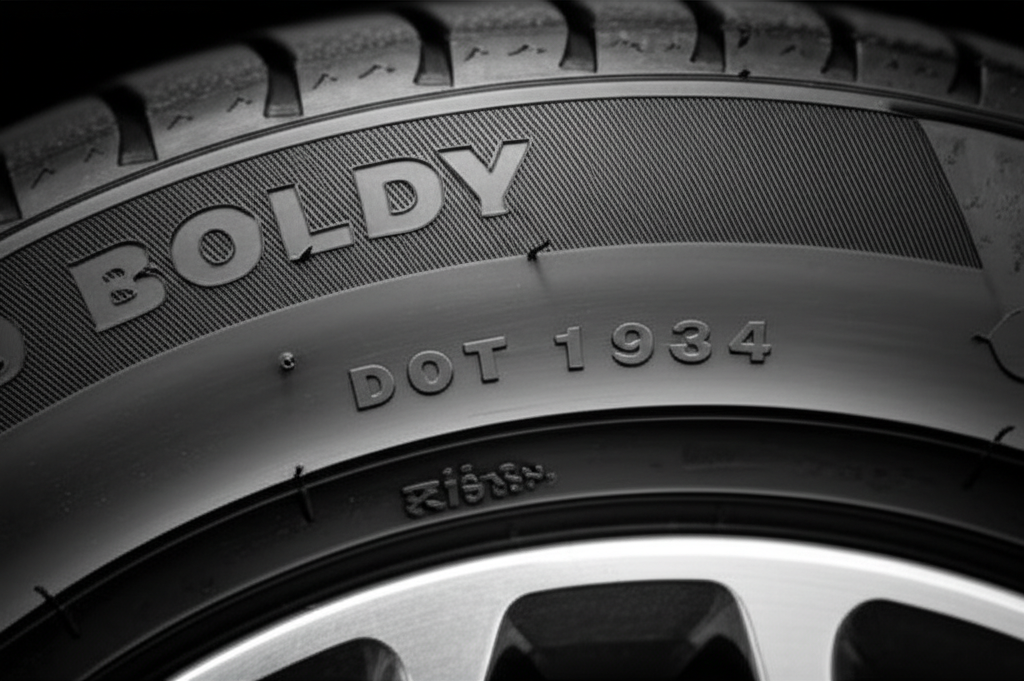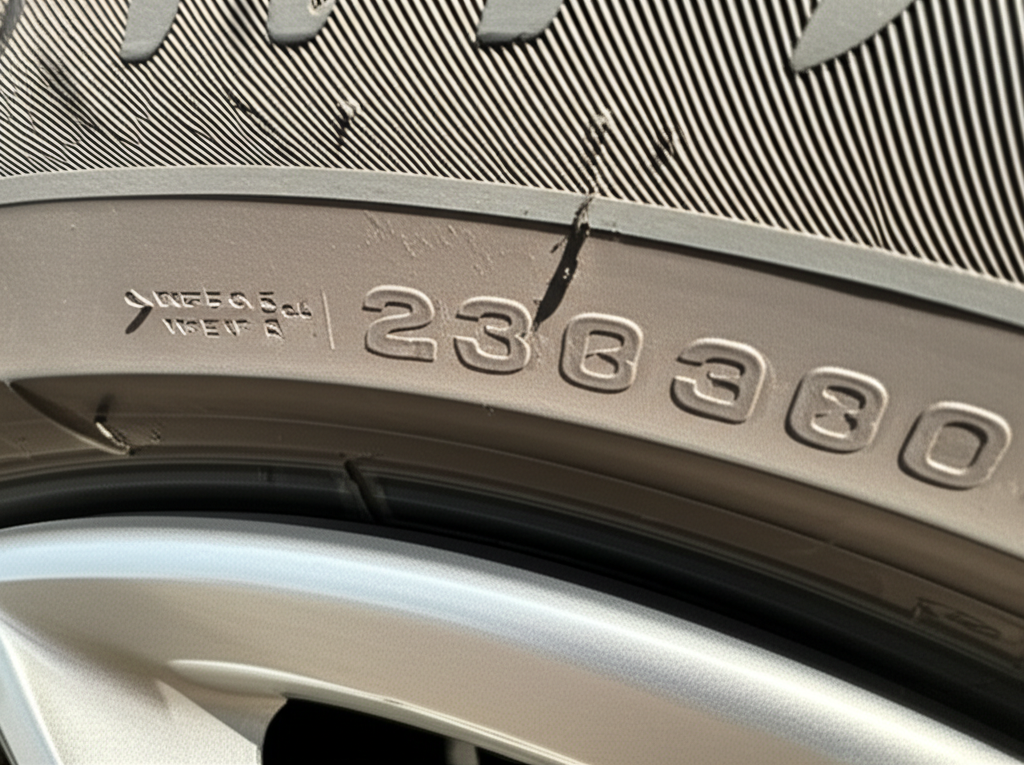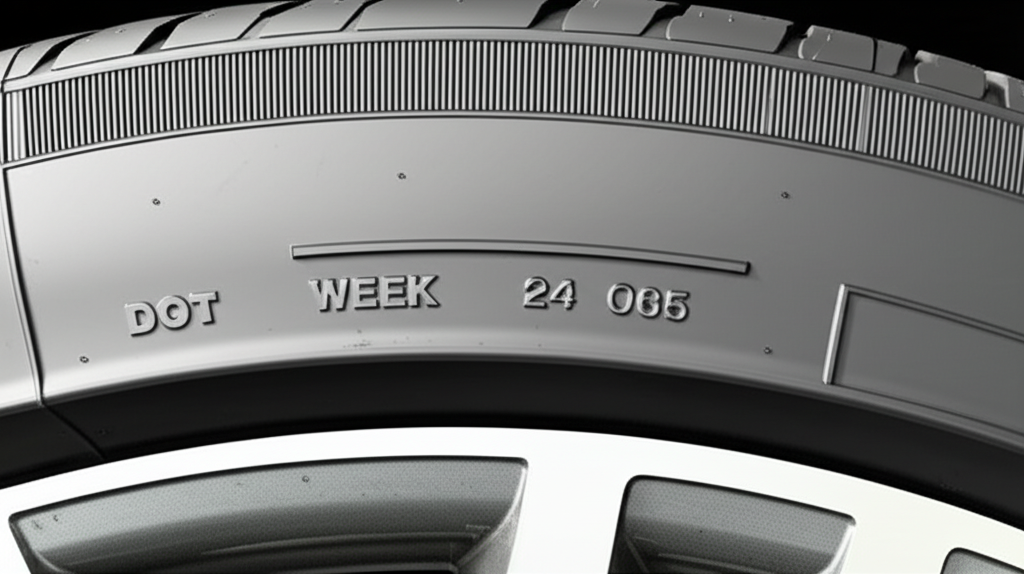How to Check Tyre Expiry Date: Essential Guide

Understanding your tyre’s expiry date is crucial for safety and performance. Look for the DOT code on the sidewall; the last four digits reveal the manufacturing week and year. Regularly checking this ensures your tyres are safe for the road, preventing potential accidents and costly replacements.
Hey there! Amira here from uaestayinn. Ever found yourself staring at your car’s tyres and wondering if they’re… well, still good? It’s a question many of us don’t think about until something feels a bit off, or perhaps a friend mentions it. The truth is, tyres don’t just last forever. Like many things we rely on daily, they have a lifespan, and knowing when that’s nearing its end is super important. It might sound a little technical, but I promise, checking your tyre’s expiry date is a straightforward process that anyone can do. It’s all about knowing where to look and what those little numbers mean. Let’s demystify this together, so you can drive with confidence, knowing your wheels are in tip-top shape!
Why Does Tyre Expiry Matter?

You might be thinking, “Tyres expire? I thought they just wore out!” And yes, tread wear is a big factor. However, the rubber compounds that make up your tyres degrade over time, even if the tread looks perfectly fine. This degradation can lead to:
- Reduced Grip: Older rubber becomes harder and less flexible, meaning it won’t grip the road as effectively, especially in wet conditions. This significantly increases your braking distance.
- Increased Risk of Blowouts: As the rubber ages and weakens internally, it’s more susceptible to sudden failure, like a blowout, which can be incredibly dangerous at speed.
- Compromised Handling: The structural integrity of the tyre diminishes, affecting how your vehicle handles turns and uneven surfaces.
- Uneven Wear: Degraded tyres can contribute to premature and uneven wear on your tyres, even if you maintain proper inflation.
Think of it like a rubber band. A brand-new one is stretchy and strong. An old one, left in the sun, becomes brittle and snaps easily. Tyres undergo a similar, though much slower, process.
Decoding the Tyre Sidewall: Your Key to the Expiry Date

The magic happens on the sidewall of your tyre. This is where manufacturers embed a wealth of information about the tyre, including its age. You’ll see a series of letters and numbers, collectively known as the DOT (Department of Transportation) code. It’s a standardized marking required in many countries.
This code can look a bit intimidating at first, but we only need to focus on a specific part of it. Look for a series of letters followed by a group of numbers. The crucial part for determining the age is typically at the end of this code.
Let’s break it down:
The Crucial DOT Code
A typical DOT code might look something like this:
DOT U2P2 C3X 0419
Here’s what each part often signifies:
- DOT: This prefix simply indicates that the tyre meets the Department of Transportation’s safety standards.
- U2P2 C3X: These characters are manufacturer-specific codes. They can tell you about the plant where the tyre was made, the tyre size, and other production details. While interesting, they are not relevant to the expiry date.
- 0419: This is the golden ticket! These are the last four digits of the DOT code, and they tell you exactly when the tyre was manufactured.
The Last Four Digits: Week and Year
The last four digits are the most important for our purpose. They are always presented in a two-digit week-of-the-year followed by a two-digit year-of-the-manufacture.
- The first two digits: Represent the week of the year the tyre was produced. So, ’01’ is the first week, ’02’ is the second week, and so on, up to ’52’ for the last week.
- The last two digits: Represent the year the tyre was produced. For example, ’19’ would mean 2019, ’23’ would mean 2023.
In our example, 0419 means the tyre was manufactured in the 4th week of 2019.
A Quick Note on Older Tyres
Before the year 2000, tyre manufacturers used a three-digit code for the manufacturing date. A code like ‘158’ would mean the 15th week of 1998. However, tyres manufactured before 2000 are extremely rare on modern vehicles, and if you have them, they are almost certainly past their safe service life anyway. For almost all practical purposes, you’ll be looking at the four-digit code.
Step-by-Step: How to Check Your Tyre Expiry Date

Ready to give it a whirl? It’s simpler than you think!
Step 1: Locate Your Tyres
This might sound obvious, but ensure you are looking at the tyres on your vehicle. You might need to get down on your hands and knees to get a good view of the sidewalls. If your car is parked on a street or a gravel surface, you might want to move it to a flat, paved area for easier inspection.
Step 2: Find the DOT Code
Walk around your vehicle and examine the sidewall of each tyre. You’re looking for that string of letters and numbers that starts with “DOT”. It’s usually located in the lower section of the sidewall, though it might be on either the inside or outside of the tyre.
Tip: If you have trouble reading it, try using your phone’s flashlight. Sometimes the light can make the embossed numbers and letters stand out more clearly.
Step 3: Isolate the Last Four Digits
Once you’ve found the DOT code, focus on the very end of it. You are looking for a sequence of four numbers. For instance, you might see:
- DOT ABC 123 2521
- DOT XYZ 789 0518
- DOT 987 654 3022
In these examples, the manufacturing dates are:
- 2521: 25th week of 2021
- 0518: 5th week of 2018
- 3022: 30th week of 2022
Step 4: Determine the Tyre’s Age
Now, let’s put it into perspective. Most experts recommend replacing tyres between 6 and 10 years from their date of manufacture, regardless of tread depth. This is because the rubber compounds degrade over time.
Here’s a quick guide to help you:
| Manufacturing Year Code | Approximate Age (as of 2024) | Consider Replacement? |
|---|---|---|
| 18 | 6 years | Yes, consider replacement soon. |
| 19 | 5 years | Monitor closely, plan for replacement within 1-3 years. |
| 20 | 4 years | Good condition, but keep an eye on wear and tear. |
| 21 | 3 years | Good condition. |
| 22 | 2 years | Good condition. |
| 23 | 1 year | Good condition. |
| 24 | New | Excellent condition. |
Please note: This table is a general guide. Many tyre manufacturers and automotive safety organizations suggest a maximum service life of 10 years, but recommend replacement between 6-10 years, or sooner if visible damage or significant wear is present. It’s always best to consult your vehicle owner’s manual or a qualified tyre professional.
Step 5: Inspect for Wear and Damage
While you’re there, it’s a perfect time to give your tyres a good all-around inspection. Look for:
- Tread Depth: Use a tread depth gauge or the old “coin test” (inserting a coin into the tread grooves – if you can see the edge of the coin, the tread is too low). Legal minimums vary, but generally, 1.6mm is the absolute minimum.
- Cracks and Cuts: Check the sidewalls and tread for any signs of cracking, splitting, or cuts.
- Bulges: Look for any unusual bulges or blisters on the sidewall, which indicate internal damage and a high risk of failure.
- Uneven Wear: Is one side more worn than the other? This could indicate alignment or inflation issues.
Even if your tyre isn’t “expired” by age, any of these issues warrant immediate attention and likely replacement.
When Should You Replace Tyres Based on Age?
This is where the “expiry date” concept really comes into play. While there’s no official “expiry date” stamped on a tyre like there is on food, the consensus among automotive safety experts and tyre manufacturers is to replace tyres:
- Between 6 to 10 years from the date of manufacture, regardless of tread depth.
- Sooner if there are signs of damage such as cracking, cuts, bulges, or significant uneven wear.
Why the range? Several factors influence tyre longevity besides age, including:
- Climate: Tyres degrade faster in hot climates due to UV exposure and heat.
- Driving Habits: Aggressive driving, frequent hard braking, and cornering put more stress on tyres.
- Storage: Tyres stored improperly (e.g., exposed to direct sunlight or harsh chemicals) will age faster.
- Maintenance: Regular checks of tyre pressure, alignment, and rotation significantly extend tyre life.
For peace of mind, treating tyres older than 6 years with caution and planning for replacement around the 8-year mark is a wise approach. If your tyres are approaching 10 years, replacement is strongly recommended, even if they look good.
Where Can You Find Authoritative Information?
Staying informed is key to safety. Here are some reputable sources for more information on tyre care and safety:
- National Highway Traffic Safety Administration (NHTSA): The NHTSA is a U.S. government agency dedicated to vehicle safety. They provide extensive information on tyre safety, including the importance of age and condition. You can find their resources at nhtsa.gov/equipment/tires.
- Tyre Manufacturers’ Websites: Major tyre brands often have dedicated sections on their websites covering tyre care, maintenance, and lifespan recommendations. For example, Michelin, Goodyear, and Bridgestone all offer valuable consumer advice.
- Automotive Associations: Organizations like AAA (American Automobile Association) also publish guides and recommendations for vehicle maintenance, including tyre care.
Frequently Asked Questions (FAQ)
Q1: How often should I check my tyre’s expiry date?
It’s a good idea to check the manufacturing date of your tyres at least once a year, perhaps when you do your regular oil change or seasonal tyre swap. This way, you can keep track of their age and plan for replacements proactively.
Q2: What if my tyres are less than 6 years old but look worn or damaged?
Age is just one factor! If your tyres show signs of significant tread wear, cracking, bulges, or other damage, they should be replaced immediately, regardless of how old they are. Your safety comes first.
Q3: Can I buy “new” tyres that are a few years old?
Yes, it’s possible. Tyres can sit in warehouses or on dealer lots for a while. While they haven’t been used, rubber still degrades over time. It’s wise to check the manufacturing date even when buying what seems like “new” stock and aim for tyres manufactured within the last year or two if possible.
Q4: Does the location of the DOT code matter (e.g., inside vs. outside)?
No, the location of the DOT code on the sidewall (inner or outer) doesn’t affect the tyre’s age or safety. You just need to be able to find and read it. If one side is hard to access, try looking at the other.
Q5: What is the recommended maximum tyre age?
While there’s no strict legal limit in most places, automotive safety experts and tyre manufacturers generally recommend replacing tyres by the time they reach 10 years of age from their manufacture date, and considering replacement between 6-10 years. After 10 years, the risk of failure increases significantly, even if they appear to be in good condition.
Q6: Do all tyres have a DOT code?
Yes, tyres sold in regulated markets like the United States, Canada, and Europe are required to have a DOT code on their sidewall, indicating compliance with safety standards and providing manufacturing information.
Your Tyres, Your Safety
Taking a few minutes to check your tyre’s manufacturing date is a small step that can make a huge difference in your safety on the road. It’s about being proactive and informed. Remember, those tyres are your only connection to the road, and ensuring they’re in good condition, both in terms of tread and age, is paramount. You’ve got this!
So, next time you’re out and about, or even just giving your car a quick once-over, take a moment to peek at those sidewalls. You’ll be glad you did!
